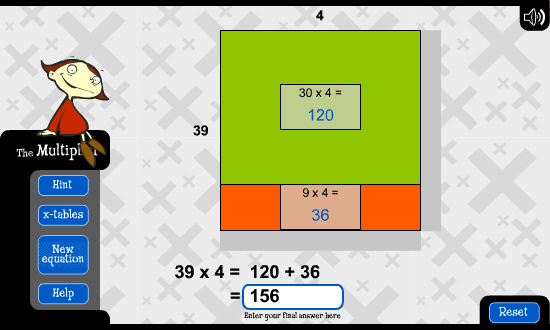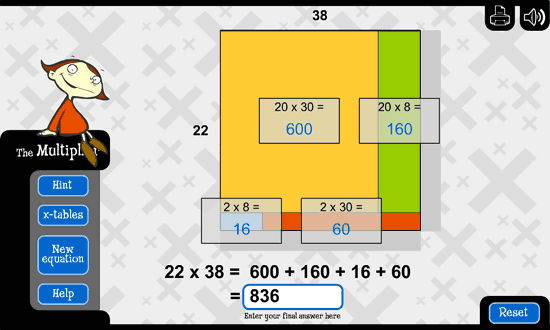|
The idea behind this strategy is to break up the numbers into other numbers that are easier to multiply.
For example, let's look at 39 times 4.
I could break up the difficult looking number 39 into its tens and ones: 30 and 9. I could then work out 30 times 4, and 9 times 4.
30 times 4 is 120 (because I know 3 times 4 is 12).
9 times 4 is 36.
I would then add 120 and 36 together to get my answer: 156.

I could use the tens and ones strategy for a harder equation like 22 times 38. This time I would break both numbers into tens and ones.
The 22 becomes 20 and 2, and the 38 becomes 30 and 8
22 times 38 is broken into 4 easier multiplications:

20 times 30;
20 times 8;
2 times 30; and
2 times 8. If I add all the answers together, that number is the answer to 22 times 38. Can you do it in your head?
20 times 30 is?
20 times 8 is?
2 times 30 is?
2 times 8 is?
Now let's add the answers together.
600 plus 160 plus 60 plus 16.
Did you get 836 as your answer?
|